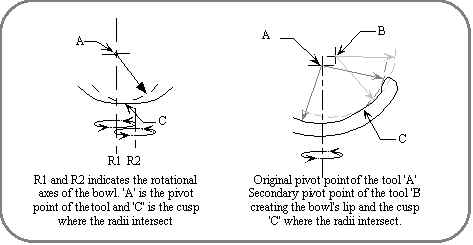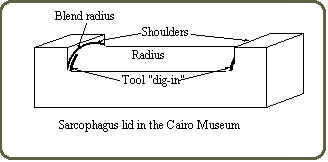Advanced Machining in Ancient Egypt Page 2
By Christopher P. Dunn
The first British Egyptologist, Sir. William Flinders Petrie, recognized that these tools were insufficient. He admitted it in his
book "Pyramids and Temples of Gizeh", and expressed amazement regarding the methods the ancient Egyptians were using to
cut hard igneous rocks, crediting them with methods that "......we are only now coming to understand." So why do modern
Egyptologists identify this work with a few primitive copper instruments?
I am not an Egyptologist. I am a technologist. I do not have much interest in who died when and whom they may have taken
with them, where they went to or when they may be coming back. No lack of respect for the mountain of work and the
millions of hours of study conducted on this subject by highly intelligent scholars (professional and amateur), but my interest,
therefore my focus, is elsewhere. When I look at an artifact with the view of how it was manufactured, I am unencumbered
with a predisposition to filter out possibilities because of historical or chronological inequity. Having spent most of my career
involved with the machinery that actually creates artifacts of the modern kind, such as jet-engine components, I am fairly well
equipped to analyze and determine the methods necessary for recreating an artifact under study. I have been fortunate, also,
to have training and experience in some non-conventional methods of manufacturing, such as laser processing and electrical
discharge machining. That said, I should state that contrary to some popular speculations, I have not seen the work of laser
cutting on the Egyptian rocks. Still, there is evidence of other non-conventional machining methods, along with more
sophisticated, conventional type sawing, lathe and milling practices.
Undoubtedly, some of the artifacts that Petrie was studying were produced using lathes. There is evidence, too, in the Cairo
Museum of clearly defined lathe tool marks on some "sarcophagi" lids. The Cairo Museum contains enough evidence that,
when properly analyzed, will prove beyond all shadow of doubt that the ancient Egyptians used highly sophisticated
manufacturing methods. For generations the focus has centered on the nature of the cutting tools that the ancient Egyptians
used. While in Egypt in February 1995, I uncovered evidence that clearly moves us beyond that question to ask "what guided
the cutting tool?"
Although the ancient Egyptians are not given credit for having a simple wheel, the evidence proves they had a more
sophisticated use for the wheel. The evidence of lathe work is markedly distinct on some artifacts that are housed in the Cairo
Museum and also those that were studied by Petrie. Two pieces of diorite in Petrie’s collection were identified by him to be
the result of true turning on a lathe.

Creating Petrie’s bowl shards.
It is true that intricate objects can be created without the aid of machinery, simply by rubbing the material with an abrasive,
such as sand, using a piece of bone or wood to apply pressure. The relics Petrie was looking at, however, in his words "could
not be produced by any grinding or rubbing process which pressed on the surface."
To the inexperienced eye, the object Petrie was studying would hardly be considered remarkable. It was a simple bowl, made
out of simple rock. Studying the bowl closely, however, Petrie found that the spherical concave radius, forming the dish, had
an unusual feel to it. Closer examination revealed a sharp cusp where two radii intersected. This indicates that the radii were
cut on two separate axes of rotation.
Having worked on lathes, I have witnessed the same condition when a component has been removed from the lathe and then
worked on again without being recentered properly.
On examining other pieces from Giza, Petrie found another bowl shard which had the marks of true lathe-turning. This time,
though, instead of shifting the workpiece’s axis of rotation, a second radius was cut by shifting the pivot point of the tool. With
this radius they machined just short of the perimeter of the dish, leaving a small lip. Again, a sharp cusp defined the intersection
of the two radii.
While browsing through the Cairo Museum, I found evidence of lathe turning on a large scale. A sarcophagus lid had
distinctive marks of lathe turning.

Sarcophagus Lid in the Cairo Museum
The radius of the lid terminated with a blend radius at shoulders on both ends. The tool marks near these corner radii are the same as those I have witnessed when turning
an object with an intermittent cut. The tool is deflected under pressure from the cut. It then relaxes when the section of cut is
finished. When the workpiece comes round again to the tool, the initial pressure causes the tool to dig in. As the cut
progresses, the amount of "dig in" is diminished.
On the sarcophagus lid in the Cairo Museum, tool marks indicating these conditions are exactly where one would expect to
find them!
|